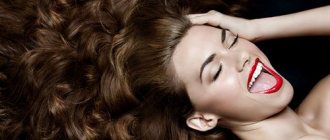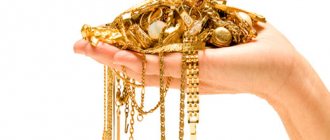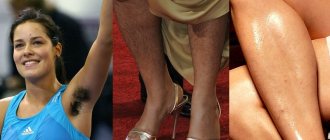Why does a person need hair on his legs? Why does hair grow on my legs?
Many people wonder why a person needs hair on his legs? For most representatives of the fairer sex this is a problem, for others it is a common and unremarkable thing. Of course, every girl dreams of having smooth skin, so she tries in every possible way to get rid of hair on her body, in particular on her legs.
Why does a person need hair on his legs? Is it possible to get rid of them? Could they be a signal of disease? You will find answers to these questions in the article.
What is hair for?
Why does a person need hair on his legs? We should not forget that nothing happens in the world just like that, and nature probably took care of such details that carry certain functions:
- Leg hair can act as protection against insects. In this way, you can protect yourself from mosquito, ant or tick bites. This barrier can prevent them from penetrating the skin.
- Serves as protection against minor minor damage.
- Performs a warming function. During the cooler months, the hair on your legs can retain heat.
- In hot weather, it protects the skin from burns or overheating.
- According to scientists, a certain energy charge is concentrated in the hair, which is lost when it is removed. But such energy is not vital, so there is nothing terrible or dangerous in removing “extra” parts.
- They improve sweating.
Man is a monkey
Some people face the problem of increased hair growth. This anomaly can occur in both men and women. Such people are sometimes called “monkey people.” The reason for this deviation is the considerable level of male hormones in the body. This is why many women experience unusual hairiness from birth or after childbirth. This indicates hormonal imbalances, which in some cases can be corrected with medication.
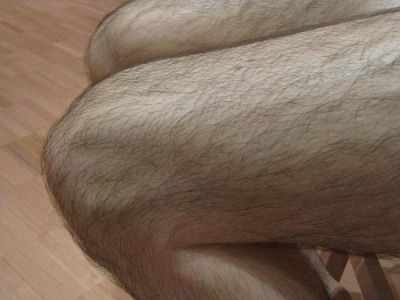
Hairy disease
Why does a person need hair on his legs? Should I worry if there are a lot of them? Owners of rich hair should treat their body and health with special attention. It is important to consider that this problem can be dangerous, since active hair growth on the legs and body can be caused by diseases such as hirsutism and hypertrichosis. In the first case, increased male-type growth is observed. Such hair is often long and coarse. This disease is unique to women. And in the second case, the disease manifests itself as excessive hair growth in any place, which does not correspond to age or gender. So, for example, black hairy legs in a young girl are not normal, and in this case it is hypertrichosis.
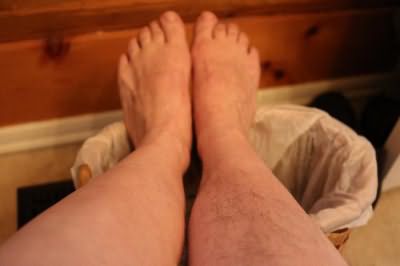
Causes of diseases
Why does hair grow on my legs? Could this be a warning sign? Yes, this can be a symptom of the above two diseases. The following factors may be the reason:
- A large amount of male sex hormones. The problem may arise after suffering from adrenal disease, lung cancer, or malfunction of the ovaries. The consequence of the latter reason is a disrupted menstrual cycle. In this situation, it is recommended to contact a gynecologist-endocrinologist. Also, the result of a large amount of male sex hormones can be baldness, oily skin, enlarged muscles, and the voice can become much rougher than it was before.
- Hereditary predisposition.
- Side effects from medications. Doctors are obliged to foresee and take this option into account before prescribing drugs that have similar negative effects.
- High sensitivity of hair follicles.
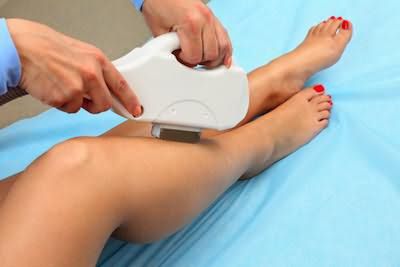
If you find any symptoms of these diseases or have concerns about your health, this is a reason to consult a doctor. This could be a gynecologist, cosmetologist or endocrinologist. You should not delay consulting a doctor, since every disease has its own consequences.
How quickly and for what reason does leg hair grow?
How long does hair grow on your legs? The answer to this question is the following facts:
- The removed hair may grow back within a few weeks after shaving.
- The hair removal process does not accelerate hair growth.
- In summer, the growth process noticeably increases due to air temperature and, as a result, increased blood circulation appears, which, in turn, nourishes the roots well.
- After removal, the hair does not become darker, it just does not have time to fade, which is why such a false impression is formed.
- Hair grows at different rates.
- A woman's legs can contain more than seventy thousand follicles. On average, about seventeen thousand hairs grow.
- The growth rate of hair on the legs can reach seven millimeters per month.
- Hairs are formed from cells that, turning into the hair shaft, penetrate the follicle.
- Women's leg hair can be compared to copper wire in its strength.
- Their growth directly depends on the season. According to the results of recent studies, it must be said that activity is observed in spring and summer.
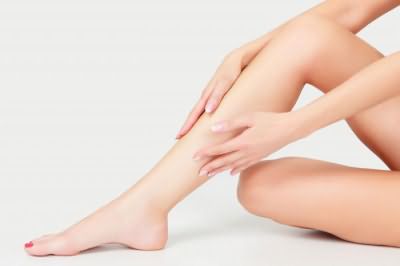
Hair – how to get rid of this problem?
Every woman dreams of getting rid of this problem, having hair-free legs and preferably for a longer period of time. To do this, any representative of the fairer sex uses her weapon. The most common tool used to remove hair on the legs and more is razor shaving. But the disadvantage of this method is that the hair grows back up to three millimeters in a couple of days. Also, special creams will help you get rid of hair for a few days. A very popular and in demand method is depilatory. With it you will forget about your problem for about a week. Hair removal using wax can guarantee smooth skin for three weeks. The most effective method of removing leg hair today is photo- or electrolysis, which allows you to look beautiful and confident for a whole month.
fb.ru
Black hair grows in unwanted places - causes and consequences
As everyone knows, the body of any person is covered with hair to one degree or another. This is natural from a physiological point of view. A completely different question is the thickness and stiffness of the hair. It is clear that for men a beard is the norm, but for women, on the contrary, it is nonsense. If we consider the situation when black hair grows in undesirable places in women (legs, arms, chest, lower abdomen), then we can conditionally distinguish two sides of the coin.

Firstly, the hair itself, even if it is very thick, can hardly bring any significant damage to its owner (we are omitting the psycho-emotional component of this issue for now). Indeed, men somehow cope with this.
Secondly. If you look at the problem of black hair growing from the other side, then the question arises - what is the actual reason? And this is where medical laws come into force.
Leg hair grows very quickly, what should I do?
Answers:
Lyudmila Shabanova
The cost of wax varies from 200 and above, it is definitely better than a razor, 3-4 times slower and nourishes the skin from oils. the best is VEET
4ika
Do styling :)))))
Natalia Boo
hair removal
Tatiana
use a cream that slows down hair growth
Andrej N
shave quickly... maybe…
Alexander Paramonov
Electrolysis, bioepilation, or at least regular waxing (wax plates, etc.) Shaving last century, somehow you forget to shave and the guy will stroke your legs like his stubble
Laleska
Epilator, wax, resin - will definitely get rid of hair for at least 2 weeks. But professional wax is better than a parasha like Veet.
Svetlana Zapolina
There are special razors, creams, gels (before and after shaving) for women. It is better to use “systems” and products marked for women, created specifically for women’s skin, which is much more delicate and sensitive than men’s. Before shaving, soften the skin, apply shaving cream and carefully shave the hairs against the direction of their growth. After the procedure, apply a soothing aftershave to your skin. To avoid drying out your skin, do not use lotions containing alcohol. A little trick. If you suddenly don’t have a special shaving foam or gel on hand, you can use a regular hair conditioner. *The razor removes hair for several days. *Depilatory cream makes the skin smooth and silky for about a week. *If you use a special epilator device, hair does not grow for 1.5-2 weeks. *The effect of waxing lasts, according to various sources, from 3 to 5 weeks (two weeks - exactly). *electroepilation, photoepilation (based on the action of intense light flux) and laser hair removal. Five to six photoepilation sessions (one per month) will allow you not to think about “extra” hair for six months. *Veet with aloe. The bottle is used as a spray on the feet. Spray on legs where hair needs to be removed. When it gets on the skin, it takes on the appearance of a mousse... Wait for 5-8 minutes and rinse with a sponge under water. A very pleasant procedure in all respects! Your legs feel a little cold when you hold the mousse. Bikinis and armpits are also treated. Removing so-called “excess” hair requires caution. If you decide to use a depilatory cream, carefully read the instructions and test for an allergic reaction. There are contraindications for hair removal with hot wax. For example, if you have swollen legs, dilated veins, warts and papillomas, and other skin diseases, this method is not suitable. If you have diseases of the cardiovascular system, viral or infectious skin diseases, electrolysis cannot be used.
************Folk remedies “Hydrogen peroxide for unwanted hair. Mixture 1 tsp. 6% hydrogen peroxide with 1 tsp. liquid soap and 5 drops of ammonia. Apply the emulsion to the scalp for 10-15 minutes. Wash off with chamomile tincture. Do the procedure once a week in the evening. Hair will lighten, become thinner and grow slowly. —Editor's review: A good recipe for people who have thin and soft unwanted hair. Peroxide with ammonia is an excellent means of bleaching hair, as well as fading it with constant use. Hair actually grows slower if you use this recipe consistently. - Chestnut for excess hair. Take 1 tbsp. brown skin of horse chestnut fruit, pour 2 tbsp. boiling water and put on low heat. Cook until the liquid has evaporated by three quarters, leaving 0.5 cups left. Then strain, cool and lubricate the areas where unwanted hair grows. —Sugar with citric acid for excess hair. To remove excess hair: take 10 pieces of refined sugar and citric acid (on the tip of a knife), stir in 3 tbsp. l. water and cook over low heat until the mixture acquires a golden color; While still warm, apply it to unwanted hairs and quickly remove.”
Ksyusha
The best option in your case is laser or photoepilation! Fast, effective, forever and painless!
Yuri Lyakh
embroider!!
ghjm hjhk
Do hair removal in a salon.
Waxing
Waxing will effectively help you get rid of unwanted hair at home. The procedure is slightly painful. There are methods of waxing: hot, warm and cold. Hot is the most painful.
When waxing at home, it is important to consider the following points:
- Wax can only be used on hairs longer than 5 mm.
- Before the procedure, it is advisable to use a scrub to exfoliate the skin on your legs.
- Be sure to sprinkle your feet with talcum powder (baby powder will also work). It will remove excess fat, and the wax will “grab” the hairs more easily.
- The wax must be heated according to the instructions.
- The wax must be applied in a thin layer using a special applicator. Wax is applied in the direction of hair growth.
- Glue the strip to the wax. It should be removed against the direction of hair growth. Since this process is painful, it is better to tear off the strip with a sharp movement.
- After removing hair, remove any remaining wax and wipe the skin with lotion or oil.
- Afterwards, apply an antiseptic to the skin to reduce irritation.

How to reduce hair growth on legs
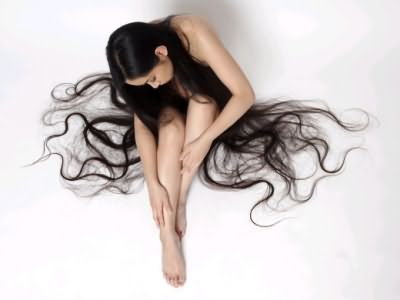
In ancient times, excessive “ hairiness ” on a woman’s body was respected. Those around them considered them “close to God.” Now everything has changed. Now every woman strives to reduce her height
hair on legs.
Instructions
- Most often, brunettes suffer from dark body hair. They have such a peculiarity of their body. In addition, most Eastern women are susceptible to this scourge. Many girls simply try to carefully hide the hair on their legs, while others try their best to get rid of them. However, it also happens that increased hairiness indicates various kinds of hormonal diseases. Therefore, if you notice that hair on your legs has begun to grow unusually quickly, that it has become longer and thicker, then only a doctor can help you. This problem usually occurs as you approach menopause. In this case, a specialist can recommend effective hormonal therapy, which helps to equalize the ratio between testosterone and estrogen.
- Another common cause of intense hair growth on the legs is diet. When a woman’s body is on a diet, it does its best to suppress the work of the ovaries. As a result, the male hormone testosterone is released in large quantities. This, in turn, leads to increased hair growth. In this case, doctors can prescribe the use of any contraceptives. They are able to suppress the male hormone and support the functioning of the ovaries. But self-medication is strictly prohibited. This can only make things worse.
- To reduce hair growth on your legs, try using some cosmetic products. They should be applied to the skin immediately after shaving. At first, hair growth will be significantly reduced, in addition, it will become less noticeable. After four to six procedures, hair will stop growing completely for a period of six months to a year. The procedure should then be repeated.
- Peppermint tea will help lower testosterone levels in the blood. Drink one cup 2-3 times a day. You can do more if you like it. However, mint has contraindications. It is not recommended to drink it for people with varicose veins and low blood pressure.
- KakProsto.ru
Sugaring procedure
An effective hair removal procedure using sugaring, which brings less pain than waxing. Hair removal occurs using sugar paste, which you can buy or prepare at home. This paste consists of sugar, lemon juice and water. It is applied against hair growth and removed along the growth line. Sugaring is included in the list of beauty salon services, but this procedure can also be carried out at home.
It is important to remember:
- For skin diseases, papillomas, abrasions and wounds, sugaring is not recommended.
- Before epilating hair on your legs, prepare your skin: clean and degrease it, wipe with lotion.
- It is recommended to sprinkle dry skin with talcum powder: this will help the paste to better grip the hairs.
- You can make it at home using 10 tbsp. spoons of sugar, 3 tbsp. spoons of lemon juice and 1 tbsp. spoon of water. This mixture should be simmered over low heat until it reaches the desired consistency.
- Warm the paste in your hands, roll it into a ball, apply it to your legs against the hairline, and then remove it with a sharp movement along the hairline.
- After completing the procedure, remove any remaining paste with water and wipe the skin with lotion.

Hair and hair on fingers - a cosmetic defect and a serious illness
We are accustomed to the fact that our hair, like ultra-sensitive sensors, reflects the internal state of the body. However, there are a number of diseases that are associated exclusively with hair.
“Finger hair disease” and “finger hair” are similar names, one of which hides a common aesthetic defect, the other a serious dangerous illness. What to choose - a beauty salon or a high-class surgeon, and why it is important not to miss the moment, we will understand further.

Hair on the big toe is a minor cosmetic defect that affects 34% of women and almost 90% of men.
Hairy fingers are a sign of a strong character
Palmists interpret the abundance of hair on the fingers and toes of men as a sign of rudeness, an emotional, sometimes unstable state and an explosive nature.
If hair grows on a woman's toes, there is a good chance that you are looking at someone who lives up to the folklore expression "a wolf in sheep's clothing." Hairs nestled on the fingers are a sign of masculine strength in a woman’s body.
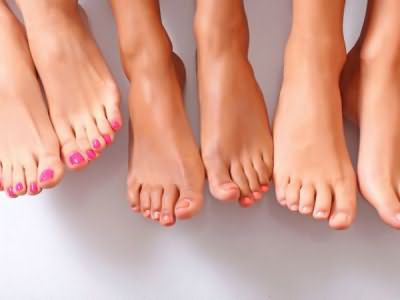
Cutting finger hair can be an excellent alternative to salon treatments and creams.
Such hairs themselves are not a sign of disease and do not require treatment. However, it is important to consider that their loss may indicate the development of atherosclerosis.
As you know, hair follicles are nourished by capillaries. Atherosclerotic plaques formed in the capillaries provoke vasoconstriction and, as a consequence, disruption of hair nutrition.
The toes and hands are not considered a particularly sensitive or delicate area, so to remove unwanted “vegetation” you can use the entire arsenal of cosmetic and home methods.
At your disposal are shaving and depilatory creams, waxing and epilation machines, laser and photoepilation.
From the people's pantry
And, of course, it would be unfair to leave you alone with the problem and not offer effective recipes that have been tested for more than one generation.

To prepare walnut ash with your own hands, you can use not only the shells, but also the partitions of walnuts
- Burn the shell of one walnut, dilute the resulting ash with water until you obtain a mushy mass . The product is applied to the area to be depilated at least 3 times a day until the hair completely disappears.
- Pour 150 g of dried datura herb with a liter of boiling water, wipe the skin area with the strained decoction until the problem is completely eliminated.

When using Datura to remove hair on women's toes, be careful; the plant is poisonous and can cause a severe allergic reaction.
- In a glass container, mix iodine (1.5 g), medical alcohol (35 ml), ammonia (2 g), castor oil (5 g). After mixing the components, wait until they are completely discolored and only then begin the procedure . You can talk about effectiveness after 2 weeks with regular use at least twice a day.
Hair is an inflammatory disease
Hair loss is popularly called a disease, which in medical practice is known as felon.
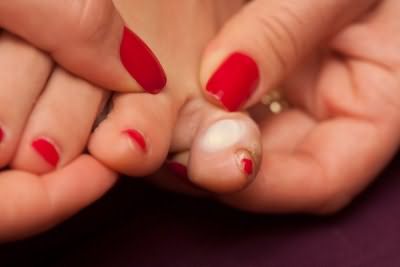
“Hair” occurs due to infection in a small wound from an injection, scratch, abrasion or hangnail
Causes
Panaritium or “hair” on the skin of the hands in men and women occurs as a result of the penetration of pyogenic microbes into soft tissues.
Most often, pyogenic microbes are understood as staphylococcus or streptococcus. The main source of infection is small wounds, abrasions, injections, scratches, splinters, hangnails; in most cases they go unnoticed.
On the palmar surface of the fingers, the skin connects with the palmar aponeurosis; this connection is ensured by dense tendon cords. Deeper than the layers of the skin are elastic fibers that form cells resembling a honeycomb filled with fatty lumps.
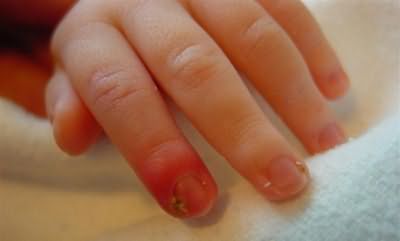
Very often, the disease affects children whose little hands are constantly in search of “adventures.”
This structure does not allow inflammation to be located along a plane, so it is directed inward, affecting deep tissues, tendons, joints and bones in a short time.
Note! The absence of urgent measures can lead to the development of a disease such as pandactylitis, which is considered a severe purulent lesion of the fingers. In the advanced form, damage occurs to the skin, tendon structures and subcutaneous tissue.
Hair: types of disease
- The skin type is characterized by the accumulation of pus under the epidermis on the back of the finger. Outwardly, it looks like a formation filled with cloudy bloody fluid; the skin takes on a red tint.
- Periungual (paronychia) is an inflammation of the periungual fold. Often the disease occurs on the fingers of women after the “efforts” of an unscrupulous manicurist.
- Subungual - the name speaks for itself and indicates damage to the tissue under the nail.
- The subcutaneous is located under the skin on the palm of the finger. Due to the fairly dense skin, pus cannot escape and spreads extremely quickly.
- Bone occurs as a result of infection of bone tissue during an open fracture or as a result of the spread of a purulent process from soft tissues.
- Articular is known as purulent arthritis of the joint. The patient feels pain on movement and palpation, as well as limited movement. Most often, the disease affects the joint of the first phalanx.
Note! An advanced form of panaritium can result not only in infection of bone tissue, but also in numerous complications: inflammation of the lymph nodes, thrombophlebitis, sepsis and osteomyelitis.
Drug treatments
One of the most effective and popular methods is the application of ichthyol ointment or Vishnevsky liniment. The title of a universal anti-inflammatory agent can rightly be given to Dimexide, which is used as compresses.
Hair on the finger - treatment with Vishnevsky ointment (price - from 40 rubles)
The discharge of pus is facilitated by baths of a strong solution of salt and soda. When performing them, it is important to remember that thermal effects on the affected area are unacceptable, so the temperature of the compress or bath should be comfortable.
Since it is necessary to treat finger hair using complex methods, various rinsing solutions will be your reliable assistants.
The most accessible remedy for home use is Furacilin. After washing, apply a compress with Shestakovsky balm to the finger; after 24 hours, it is recommended to make applications with celandine.
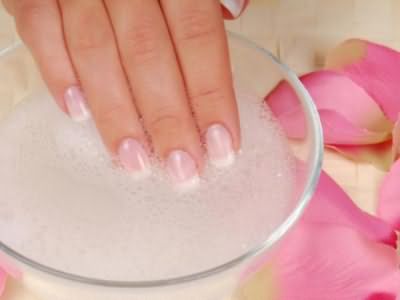
Remember that the hair treatment instructions do not allow the use of hot compresses and baths
Washing with hydrogen peroxide and applying a compress with a mummy solution (0.2 g mummy per 1 teaspoon of water) are no less effective. Place a cotton swab moistened with sea buckthorn oil on top of the compress.
Folk recipes
How to remove “nail eater” using folk remedies is described in the “Complete Russian Folk Treatment Book,” dating back to the 18th century.
Traditional healers recommended applying a roasted narcissus bulb, clay and walnut to the affected limb. This advice has not lost its power in the modern world.
Take yeast and clay in equal proportions, apply a homogeneous mixture to the nail and leave until completely dry, then replace the compress with a new one.

Photo of your reliable and safe “doctor” - baked onions
Boil the onion head in milk or fry it. Divide into separate layers and apply warm to your finger, change the compress every 4 hours.
Among the herbs, decoctions of willow bark, eucalyptus and St. John's wort will be effective.
Conclusion
If treated correctly, felon or “hair” does not pose a threat to health. When faced with a problem, do not lose a positive attitude, be patient and follow the instructions exactly, and the video in this article will become your reliable guide to the world of health and beauty (see also the article “What is inflammation of the hair follicle and how to treat it”).
shpilki.net
Why do women have thick hair on their legs?
Answers:
Sasha Melnikova
Men also have quite a bit of hair on their legs) And women... hmm... haven’t you noticed that initially, in childhood, the hair on their legs is thin... but then they start shaving it..))
Alla Sarycheva
hormones are like that
Nastenka N
because they shave their legs, but not their arms))
Svetlana
Well, you give! all women shave their legs
Isok
The seedlings spread from the groin area to the heels.
Bahr
Why does everything grow very thickly on men’s faces and also very thickly on their hands?))))
Olga
Where? What kind of hair? There is no hair!
Yulia Khokhlova
There are more male hormones than female ones.
...The Little Bird...
They are not like this for everyone from birth. Some people start shaving them, and then they grow even bigger, thicker and denser. And for others, male hormones predominate in the body. This is how the hair grows.
Anna Gnezdilova
Testosterone in excess
"Chopped" face
Roman, 46: “Face looks like 45, neck looks like 55. Well, she’s so chipped - it’s disgusting to look at!”
Valery, 22: “The wrinkles are visible, although they are retouched. 53 exactly."
In fact: Nicole Kidman is 52 years old.
A lot of time (and probably money) is spent on cosmetologists, but the desired effect is zero. Nicole, like many other residents of sunny countries, is aging according to the fine-wrinkle type. Instead of actively moisturizing and nourishing the skin, stimulating its natural renewal, the actress decided to take the “simplest” path, making friends with Botox and fillers. As a result, wrinkles across the entire surface of the skin have not gone away, and the face looks like a lifeless, inflated mask.




